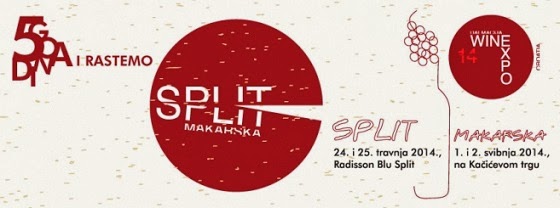The latest stretch of the motorway planned from Zagreb to Dubrovnik opened recently, finally linking Dalmatia with the coast at Ploce. It was time to explore the unknown in what was bound to show some new aspects of Central Dalmatia.
And so it proved in what was quite an interesting journey.
.jpg)
As one would expect on a new motorway early on a Sunday morning in January, the road was both pristine and totally empty. There were hardly any other vehicles in either direction, giving me a chance to stop and take some pictures. It was an odd contrast, driving through deserted parts of the hinterland, with the most modern of roads taking me along that journey.
.jpg)
Careful consideration has been given to the wildlife, with lots of signs pointing out the 'Green Bridges' - paths for the wild animals of the region to cross. A reminder that inland Dalmatia is one of the country's prime hunting destinations, and perhaps giving an unfair advantage to the hunters...
.jpg)
It was exciting to see the towns of Inland Dalmatia come into view - here is Vrgorac for example. Once off the beaten track, now totally accessible. The signage was good - the turn to Imotski also had signs for the must-see attractions of the Blue and Red Lakes.
.jpg)
And after a little consideration, I concluded that this must be the stretch of motorway that Volvo used when filming that incredible promo video near Vrgorac. Check it out here.
.jpg)
With the lack of traffic, there was plenty of time to admire the stunning mountain scenery. The journey was instructive, a sign of how much inland Dalmatia is now accessible. All that remains is to tell people about what they can find there!
But for people travelling from Zagreb to Peljesac, for example, this new stretch is fantastic news - less than 500 kilometres to the ferry at Ploce and then to Trpanj. I turned off for Metkovic, 48 kuna poorer but a little wiser and a lot more relaxed that I would otherwise have been. And as I turned, I saw some gleaming motorway signs for Mostar and Sarajevo off in the distance. A taster of what could be... And how many more fabulous hidden gems would then be available for exploring?



.jpg)
.jpg)
.jpg)
.jpg)
.jpg)
.jpg)


.jpg)
.jpg)
.jpg)
.jpg)
.jpg)
